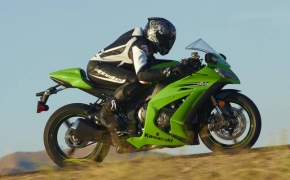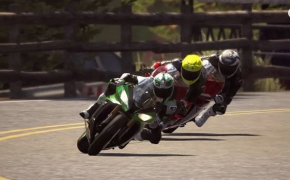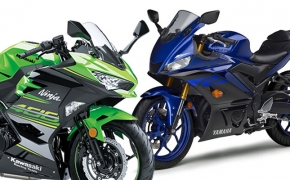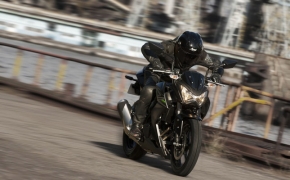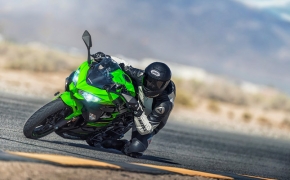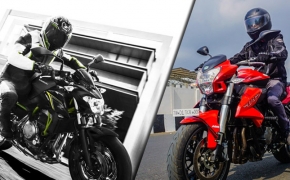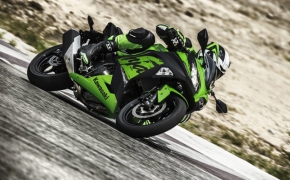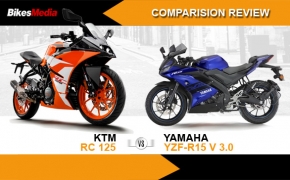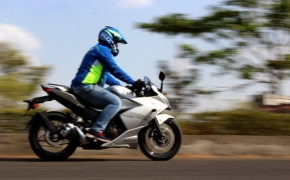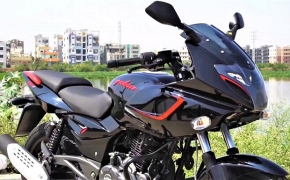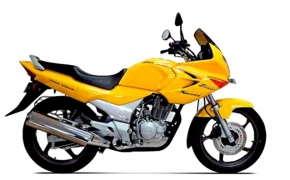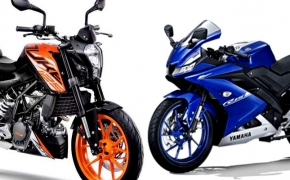FIM, the supreme governing body of the world's best 2-wheel racing events, organizes the one-of-a-kind MotoGP World Championship and the more common Superbike World Championship (WSBK). Though these events are organized by the same authority, there are many striking differences between the best events of closed circuit racing.
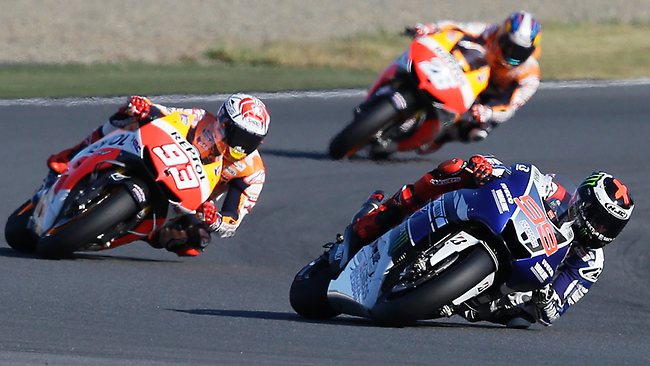 MotoGP Event:
MotoGP Event:
MotoGP, which replaced the premier class or the 500cc class of racing back in 2002, replacing the insane 500cc two stroke bikes with equally insane 1000cc four strokes. These bikes produce power above 240 horsepower, and the number varies with respect to the circuit where it is raced. Bikes used here are strictly prototypes, with pneumatic valve systems driving the valves and a seamless shift gearbox to achieve instant gearshifts.
A MotoGP bike needs to have a weight of 168 kilos including the fuel, and fuel is limited to 21 liters for a factory bike and 24 for an open class bike. Factory bikes are allowed to use five sealed engines per season, whereas, the open class bikes having an opportunity to use 12 of them, which can be modified or developed in-season.
Factory Class Bikes:
The bikes backed by major manufacturers or the bikes run by major manufacturers is knows as a factory class bike. Factory class bikes might be an official bike or a bike leased to satellite/customer teams. Repsol Honda and Movistar Yamaha are the two major factory class teams. Whereas, the monster Yamaha Tech3, Estrella Galicia 0,0 MarcVDS Honda and CWM LCR Honda are the major factory backed satellite teams.
Open Class Bikes:
Open class bikes are the bikes which are lower spec'ed ones when compared to the factory based bikes or the teams are lent the bikes that are run in the previous season. Aspar Honda, Athina Forward Yamaha, Avintia Racing, AB Motorsport Ducati and CWM LCR's Jack Miller run open class bikes.
There are few teams which are factory teams, yet use the regulations of the open class bikes due to a rule in the MotoGP rule-book, which states the teams that didn't have a race win for the past two seasons and new manufacturers can use the open class regulations, until they get two podium finishes. Factory Ducati team, Team Suzuki Ecstar and Aprilia Gresini belong to this category.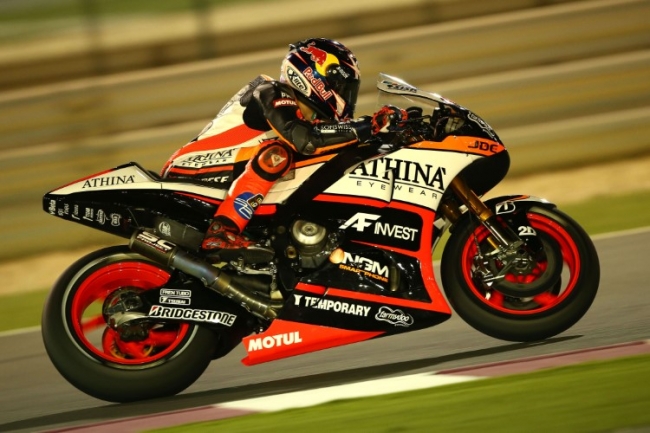 In other words, factory runners are forbidden to do their homework mid-season, while the open class riders can do that mid-season.
In other words, factory runners are forbidden to do their homework mid-season, while the open class riders can do that mid-season.
MotoGP bikes are capable of clocking speeds north of 340 kilometers per hour, the record being held by Andrea Iannone (#29) on-board a Pramac Racing Ducati Desmosedici GP14 and he clocked 349.6 kmph at Mugello, Italy.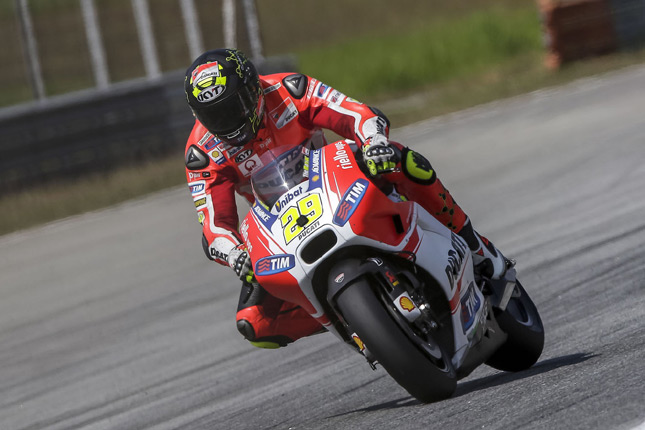 World Superbike Championship (WSBK):
World Superbike Championship (WSBK):
2015 marks the Superbike world championship or WSBK's 26th year in existence. This class has been a deciding factor in declaring the best superbike on sale in the world. Unlike MotoGP, WSBK uses a slightly modified version of production bikes with production-Spec machinery and electronics.
The base for a WSBK bike needs to be a homologated version of any production-spec superbike available for sale in the world. There's very little scope of modifications in the overall package, like the cam shafts, the exhaust systems, carbon fiber fairings and the removal of road-going equipment like headlamps, tail-lamps and rear view mirrors for weight saving.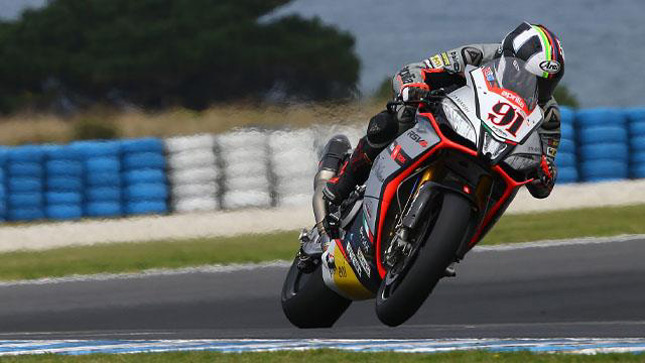 WSBK has a cubic capacity (cc) cap of 1000cc for four cylinder engine bikes, and 1200cc for a twin cylinder engine bikes, thus favoring the latter in terms of weight saving and more power in stock conditions. This handicap initiated lots of protests, with Yamaha pulling out of the WSBK championship In 2008.
WSBK has a cubic capacity (cc) cap of 1000cc for four cylinder engine bikes, and 1200cc for a twin cylinder engine bikes, thus favoring the latter in terms of weight saving and more power in stock conditions. This handicap initiated lots of protests, with Yamaha pulling out of the WSBK championship In 2008.
WSBK rules strictly forbid the use of light alloys and metals like titanium in the wheels and swingarm, and use of aftermarket pistons, crankshafts and cylinder heads is also prohibited. The bikes are supposed to be as close to a stock bike as possible, leading to the production of more powerful production superbikes in the world.
The electronics package can be modified, but the price of the equipment needs to be below € 8000, with which top-of the shelf components cannot be purchased, thus is built-in into the base bike, and so is the suspension package. WSBK permits the usage of automatically adjusting suspension, unless its built into the stock bike, thus this feature also seeped into production superbikes like the 2015 Yamaha R1M, Ducati 1199 Panigale Superleggera, the 2015 Panigale R have this feature built-in.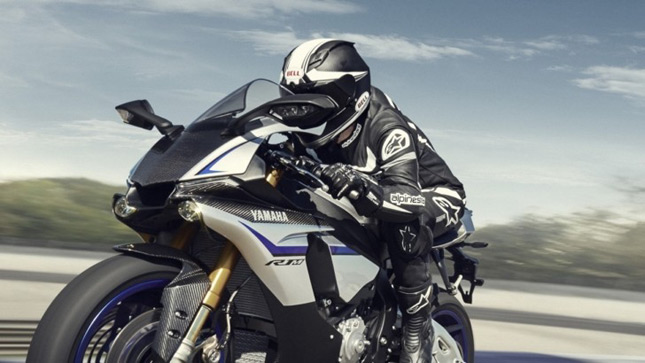 Thus, both the events, though of similar cubic capacities, are miles apart when it comes to the power, the significance and the cutting-edge technology involved in producing these masterpieces.
Thus, both the events, though of similar cubic capacities, are miles apart when it comes to the power, the significance and the cutting-edge technology involved in producing these masterpieces.
By: Suraj
 MotoGP Event:
MotoGP Event:MotoGP, which replaced the premier class or the 500cc class of racing back in 2002, replacing the insane 500cc two stroke bikes with equally insane 1000cc four strokes. These bikes produce power above 240 horsepower, and the number varies with respect to the circuit where it is raced. Bikes used here are strictly prototypes, with pneumatic valve systems driving the valves and a seamless shift gearbox to achieve instant gearshifts.
A MotoGP bike needs to have a weight of 168 kilos including the fuel, and fuel is limited to 21 liters for a factory bike and 24 for an open class bike. Factory bikes are allowed to use five sealed engines per season, whereas, the open class bikes having an opportunity to use 12 of them, which can be modified or developed in-season.
Factory Class Bikes:
The bikes backed by major manufacturers or the bikes run by major manufacturers is knows as a factory class bike. Factory class bikes might be an official bike or a bike leased to satellite/customer teams. Repsol Honda and Movistar Yamaha are the two major factory class teams. Whereas, the monster Yamaha Tech3, Estrella Galicia 0,0 MarcVDS Honda and CWM LCR Honda are the major factory backed satellite teams.
Open Class Bikes:
Open class bikes are the bikes which are lower spec'ed ones when compared to the factory based bikes or the teams are lent the bikes that are run in the previous season. Aspar Honda, Athina Forward Yamaha, Avintia Racing, AB Motorsport Ducati and CWM LCR's Jack Miller run open class bikes.
There are few teams which are factory teams, yet use the regulations of the open class bikes due to a rule in the MotoGP rule-book, which states the teams that didn't have a race win for the past two seasons and new manufacturers can use the open class regulations, until they get two podium finishes. Factory Ducati team, Team Suzuki Ecstar and Aprilia Gresini belong to this category.
 In other words, factory runners are forbidden to do their homework mid-season, while the open class riders can do that mid-season.
In other words, factory runners are forbidden to do their homework mid-season, while the open class riders can do that mid-season.MotoGP bikes are capable of clocking speeds north of 340 kilometers per hour, the record being held by Andrea Iannone (#29) on-board a Pramac Racing Ducati Desmosedici GP14 and he clocked 349.6 kmph at Mugello, Italy.
 World Superbike Championship (WSBK):
World Superbike Championship (WSBK):2015 marks the Superbike world championship or WSBK's 26th year in existence. This class has been a deciding factor in declaring the best superbike on sale in the world. Unlike MotoGP, WSBK uses a slightly modified version of production bikes with production-Spec machinery and electronics.
The base for a WSBK bike needs to be a homologated version of any production-spec superbike available for sale in the world. There's very little scope of modifications in the overall package, like the cam shafts, the exhaust systems, carbon fiber fairings and the removal of road-going equipment like headlamps, tail-lamps and rear view mirrors for weight saving.
 WSBK has a cubic capacity (cc) cap of 1000cc for four cylinder engine bikes, and 1200cc for a twin cylinder engine bikes, thus favoring the latter in terms of weight saving and more power in stock conditions. This handicap initiated lots of protests, with Yamaha pulling out of the WSBK championship In 2008.
WSBK has a cubic capacity (cc) cap of 1000cc for four cylinder engine bikes, and 1200cc for a twin cylinder engine bikes, thus favoring the latter in terms of weight saving and more power in stock conditions. This handicap initiated lots of protests, with Yamaha pulling out of the WSBK championship In 2008.WSBK rules strictly forbid the use of light alloys and metals like titanium in the wheels and swingarm, and use of aftermarket pistons, crankshafts and cylinder heads is also prohibited. The bikes are supposed to be as close to a stock bike as possible, leading to the production of more powerful production superbikes in the world.
The electronics package can be modified, but the price of the equipment needs to be below € 8000, with which top-of the shelf components cannot be purchased, thus is built-in into the base bike, and so is the suspension package. WSBK permits the usage of automatically adjusting suspension, unless its built into the stock bike, thus this feature also seeped into production superbikes like the 2015 Yamaha R1M, Ducati 1199 Panigale Superleggera, the 2015 Panigale R have this feature built-in.
 Thus, both the events, though of similar cubic capacities, are miles apart when it comes to the power, the significance and the cutting-edge technology involved in producing these masterpieces.
Thus, both the events, though of similar cubic capacities, are miles apart when it comes to the power, the significance and the cutting-edge technology involved in producing these masterpieces.By: Suraj












